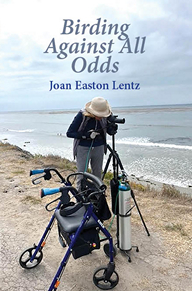FEBRUARY 20, 2014 – What is the “Sixth Extinction”?
A couple of nights ago I went to an event through the Arts and Lectures program at UCSB.
The speaker was Elizabeth Kolbert, an investigative reporter for The New Yorker, National Geographic, and other magazines. Her topic was centered around her recent book: The Sixth Extinction: An Unnatural History.
I had wanted to hear her, and I was not disappointed. She has a lot to say, and has traveled all over the world gathering evidence for this latest book. It is not for the faint of heart!
Ms. Kolbert didn’t originate the phrase “the sixth extinction”. That’s been around for awhile. But her premise is that over geologic time there have been five mass extinctions, usually caused by various natural phenomena, such as the asteroid that destroyed the dinosaurs millions and millions of years ago when it collided with our planet at the end of the Cretaceous.
The difference now is: this sixth extinction event is being caused by humans. Whether you consider that “natural” or not is a good question. It certainly hasn’t occurred before in the history of the world.
She gave three important causes for this alarming situation. They were familiar to me, but I gasped at the implications.
First, we are “running geology backwards at a rapid rate” according to her. By extracting fossil fuels at such a quickened pace, we are taking out gas, coal, and oil that took eons to form.
This has increased carbon dioxide amounts released into the atmosphere, resulting in global warming changing the climate of our world. The warming is especially dramatic in the Arctic regions, where large ice sheets have shrunk.
With this quickened pace of climate change, can organisms adapt fast enough to the new situations? For example, birds must migrate earlier if the ice sheet frees up the tundra, or they can’t claim good nesting spots and take advantage of the first “bloom” of mosquitoes to feed their young.
Second, the excess carbon dioxide emitted by human activities is absorbed in large quantities into the ocean. This acidification of the ocean is making it difficult for certain animals to form the shells they need to survive. Corals are struggling to produce the calcium carbonate which make up reefs.
Lastly, humans are transporting animals from one place to another more quickly than ever before. These non-native interlopers may be harmless, but often they are not. The Asian Carp and the Zebra Mussel are examples of organisms that have been brought to North America with disastrous consequences for native species. In their new home, the carp and the mussel have no natural enemies, and they’ve spread like crazy. They clog our rivers and devour native fish.
So you can see the role we humans play in our fragile world. Every day, certain species are unable to survive the altered conditions; they’re not given the time to evolve adaptations for survival. They become extinct.
Kolbert’s message is a sobering one. Maybe that’s why people were getting up and leaving towards the end of the lecture.
Do we want to hear this? No. Should we learn about it? Absolutely.

